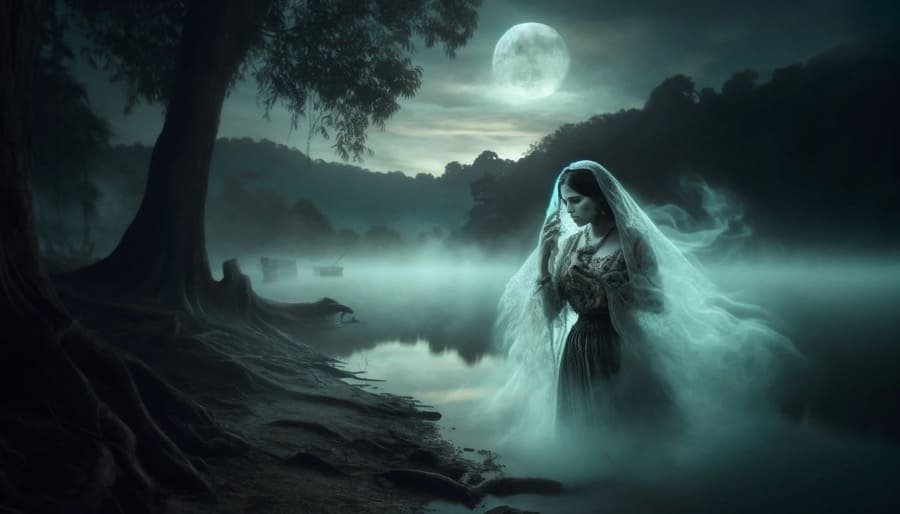La Llorona: A Legend of Passion, Doom and Eternal Sorrow

In Guatemala, the legend of La Llorona has particular connotations that reflect both historical and cultural aspects of the country. Here, La Llorona is often seen not only as a terrifying figure, but also as a symbol of resistance and pain in the face of oppression and injustice.
The Guatemalan version of the myth often incorporates themes of social inequality and the aftermath of historical conflicts, giving it a unique character within local folklore.
The legend of La Llorona in Guatemala
In Guatemala, the legend of La Llorona tells the story of Maria, a woman who lived in ancient times and was part of high society. Maria had a lover who left her to be with another woman. Desperate and heartbroken, Mary made a terrible decision in a moment of great pain: she drowned her son, John of the Cross, in the river.
After doing this, Mary realized the horror of her act and could not bear to live with the guilt. They say she jumped into the same river to be with her son, but instead of finding peace, she was trapped between the world of the living and the world of the dead.
Since then, it is said that La Llorona wanders at night near the rivers of Guatemala, looking for her son. Their cries and screams can be heard in the darkness. A peculiar part of this legend in Guatemala is that if you hear the cries of La Llorona very close, it means that she is really far away, and if you hear them far away, she is very close.
The story of La Llorona is more than just a horror legend; it is a tale that carries messages about love, loss and the consequences of our actions. In Guatemala, the story continues to be told from generation to generation, keeping alive the folklore and the teachings it brings with it.
The origin of this story
The origin of the legend of La Llorona is lost in time and is mixed with the history and mythology of Latin America. Although this legend is known in many Latin American countries, each place has its own version that reflects its own fears and cultural contexts.
Pre-Hispanic Origins
The idea of a woman lamenting the loss of her children can be traced back to the beliefs of indigenous peoples before the arrival of the Spanish.
In pre-Hispanic Mexico, for example, there was a goddess named Cihuacóatl, who was said to wander at night crying for her children. This mythological figure may have been an initial inspiration for what would later become known as La Llorona.
Colonial Adaptation
When the Spanish conquistadors arrived in America and began to mix their culture and religion with those of the indigenous peoples, many of these ancient legends were transformed. The story of a mother suffering for her children was mixed with Christian themes of sin and redemption.
Thus, the figure of La Llorona began to take shape as we know her today: a woman who, because of her actions against her own children, is condemned to wander eternally, weeping and searching for her children in the afterlife.
In Guatemala
In Guatemala, as in many other places, La Llorona is adapted to a local context. Here, the legend often has elements that reflect social problems such as infidelity, inequality and justice.
Maria, the woman behind the Guatemalan legend, represents many women of the colonial era who faced enormous difficulties and impossible decisions in a world where power structures were rigid and often unjust.
Although the exact origin of La Llorona is difficult to determine, it is clear that the legend is a product of a fusion of indigenous beliefs and colonial elements that has been adapted to express and explore the fears and anxieties of different cultures over the centuries.






